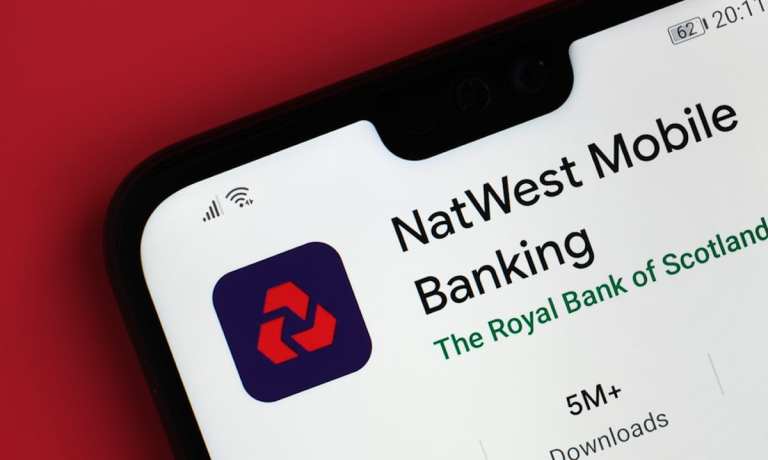NatWest Integrates Trust Factor Into Digital-First Approach

In a battle, you fight with the weapons you’ve got. That’s true in corporate warfare, too, and especially in financial services, where traditional, entrenched players, like banks and credit unions, must joust with tech-nimble upstarts like FinTechs and neobanks to lure new customers – and keep existing users in place.
For incumbents, the most effective strategy might be to use a hybrid approach that plays to existing strengths and brings them into the digital age – using personalization and even the human touch to keep customers coming back for more.
As reported this week, NatWest, home to about 16 percent of current accounts in the U.K., has been revamping at least some of its operations to meet the challenges posed by digital-first (and digital-only) firms.
In a nod to the appeal of person-to-person interactions – modified a bit for the pandemic – the bank will make bankers available for evening meetings, by video. That functionality, of course, uses apps and screens – and (ostensibly) one’s phone – to get it all done, so there’s a tech component to it. But the core “event” is one that brings conversation and guidance into the mix, where consumers get a bit of insight and direction, should it be on offer.
This offering stands in stark contrast to the bots, chats and automated functions that are the hallmarks of neobanks. In the U.K., especially, the battle is a heated one. Monzo and Virgin Money, for example, are raising money at a furious pace, and competing for the current accounts of both corporates and consumers.
Fine-Tuning The Competitive Advantage
It may be the case that open banking gives the incumbents some of the fine-tuning and tweaking that would make these one-on-one interactions especially potent. After all, data, to use a time-worn phrase, is the oil that keeps financial services running. NatWest is reportedly expanding its credit card operations and broadening its wealth management offerings to embrace less high-net-worth individuals.
At the same time, last year, NatWest announced the launch of a new online payment service, Payit by NatWest, developed in partnership with Pollinate. The service allows customers to make instant online payments without using debit or credit cards, by way of open banking infrastructure. And separately, Pollinate offers a cloud-based platform that allows banks to offer a one-stop-shop offering digital loyalty schemes, marketing tools and insights for SMBs. Those offerings are already in use by NatWest in the U.K. and NAB in Australia.
Banks like NatWest, through a hybrid approach that marries the familiar with the new (i.e., bank officers available via video calls) can thus battle the neobanks by reaching the customer, wherever he or she may be.
Along the way, these incumbent FIs, as they use data to monetize new experiences, can reinforce a key competitive advantage: trust. As PYMNTS research has shown, customers have some pretty definite ideas of what a bank must do to be considered, well, a bank. For nearly all of the customers we asked (98 percent), a bank has to provide three primary things: a place to store their money, a means to save their money and an easy path to physically access their money, such as a physical branch and ATM network. These three points are groundwork for expectations — and also groundwork for banks’ sharpening some of their competitive tools.
As Barry Baird, head of payments capability and delivery at TD Bank, told Karen Webster in a recent On the Agenda conversation, customers are expecting to see – and indeed want to encounter – a hybrid approach from their providers. “If it’s going to be their primary bank, it must have a holistic solution that can meet every need,” he said.
The rise of mobile banking in the U.S. also offers some evidence that the hybrid approach – the holistic solution – is gaining ground, especially as detailed in the recent deluge of earnings reports. Consumers have been pivoting to their mobile devices to attend to their everyday financial needs.
Bank of America said this past week that active mobile banking users rose 6 percent to 30.8 million during the quarter. Active digital banking users likewise grew 3 percent to 39.3 million. In terms of customers going online to bank, BofA added that digital sales accounted for 45 percent of all consumer banking sales for the quarter.
Separately, J.P. Morgan Chase said in its own results that the branch footprint shrank 1 percent to a net 4,908. CFO Jennifer Piepszak stated that 69 percent of the bank’s customers are “digitally active,” and as many as 80 percent of check deposits in the quarter were done via QuickDeposit. Citigroup said in its latest results that mobile users of Citi banking services are up 95 percent year on year.
Read More On Digital Banking:
- Monzo Debuts Digital Bank Accounts for Kids Under 16
- Wells Fargo Turns to Digital, AI as Inflation Batters Deposits
- Alacriti and Lumin Digital Partner to Facilitate Loan Payments
- FDIC Warnings on Nonbanks Point to Gaps in Deposit Insurance